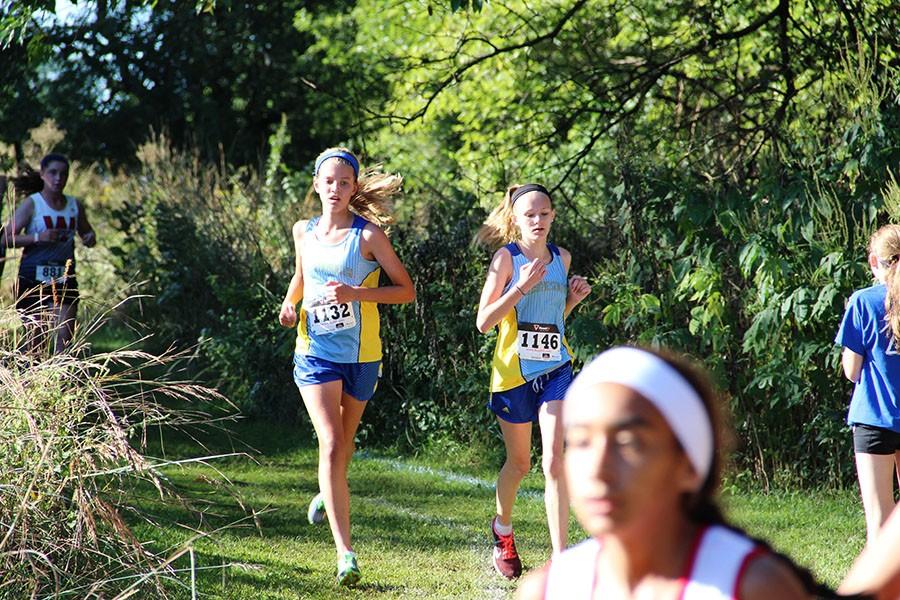Cross country team vigorously trains for success
Lilly Engeman, freshman,and Kiley Cox, freshman, race together to help each other keep running and help each other beat there own PR’S.
November 10, 2015
Cross country is a sport unlike any other. Though it has the same goal as all other sports (to finish first), it is very different in its nature.
Every single day the runners have a different workout.
“My favorite workout is mile repeats,” Sam Hengeli, senior, said, “it’s where we run a mile over and over five times in a row.”
Monday is the long run (nine miles), Tuesday is the hill workout (six miles), Wednesday is the recovery run (five miles), Thursday is the tempo run (six miles) and Friday is the pre-meet run (two miles).
The first thing they do is run a couple warm-up laps on the track. Then they do a dynamic warm-up. This consists of movements to warm up the joints and muscles at the same time.
“We do what I call general strength sets each day” Adam Moos, cross country coach, said “This includes pushups, abs, single leg squats, core work, hip mobility and form running.”
After every run, they do what are called strides, a 100-meter run. For the first 50, they build up speed, from 50-75 meters they run full speed and from 75-100 meters they coast back down to a stop. They do strides because distance runners have most of their focus on pace, not speed. In the final 100 meters of a close race, runners need to find the last bit of energy in them to push to the finish line.
The team also does stretches after all of their runs. The reason for this is mainly to prevent injury. For runners and other athletes alike, being healthy is key. For cross country, a meal plan is not required, but eating healthy and avoiding processed food is extremely important.
When the regional meet is approaching, the team does something called tapering. For four days of the week before regionals, the team doesn’t do their normal, intense workouts. Instead, they do shorter runs with more stretching.
“The theory is that the tapering makes the runs feel easy and more relaxed so by the time regionals happens, the runners will be relaxed,” Coach Moos said. “It makes them run one of the most important races of the year without being tired or worn out from the practices that week.”

